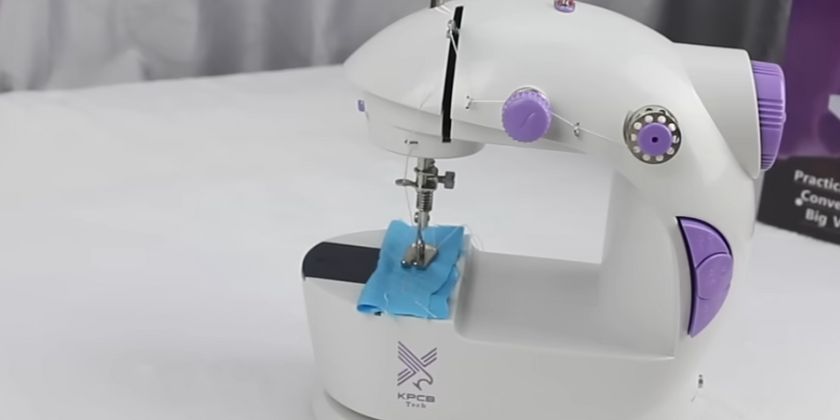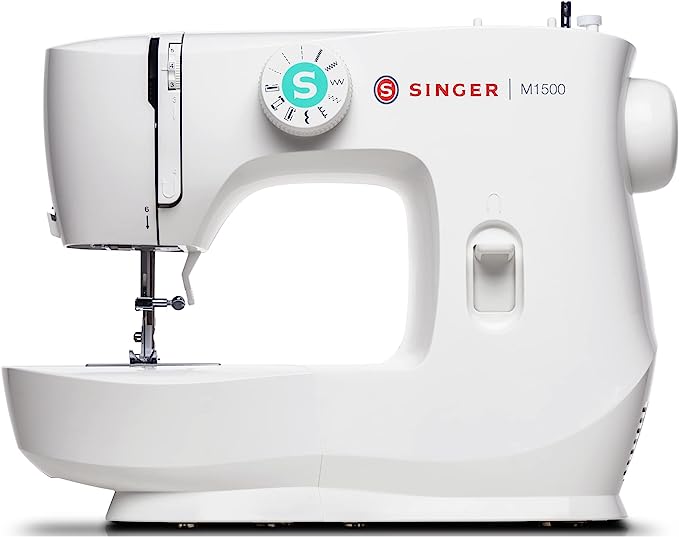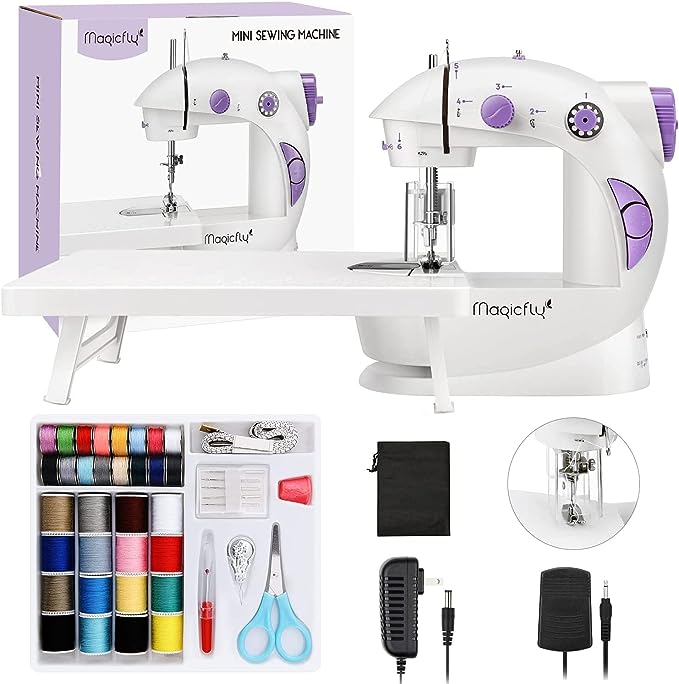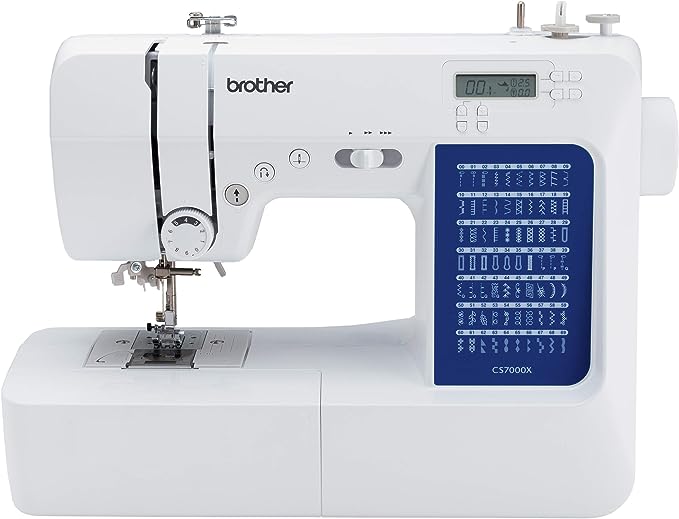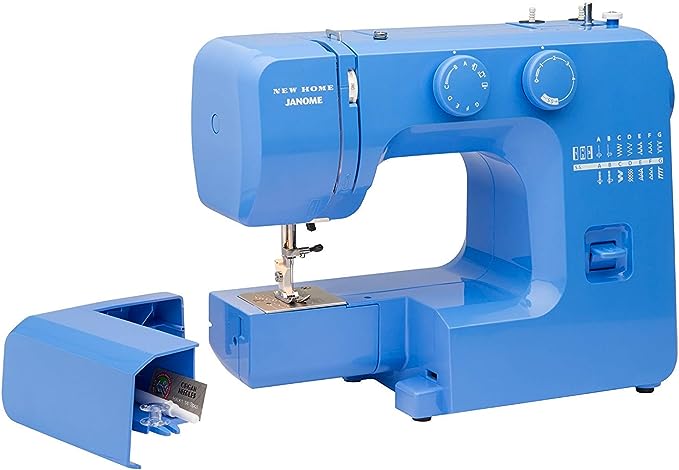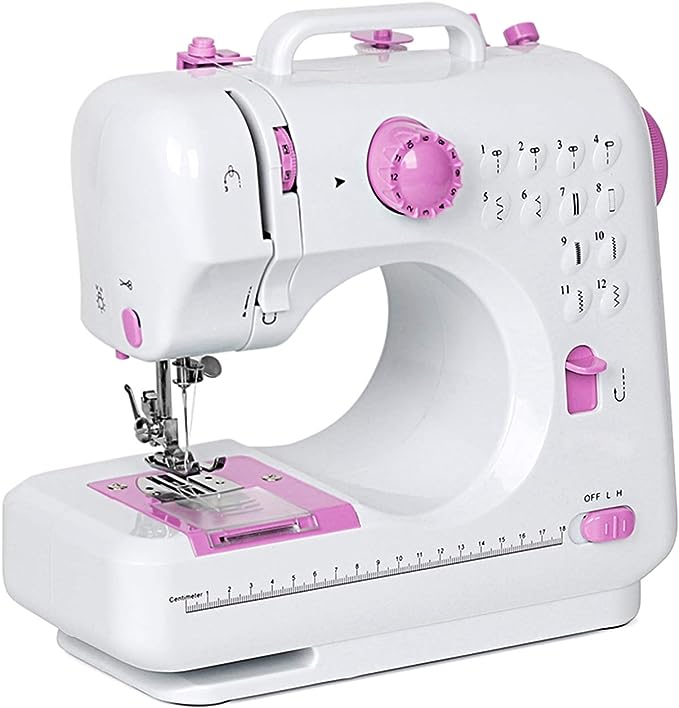Is your child begging for a sewing machine but you’re worried they’ll get frustrated with a complicated model? You’re not alone! Finding the right sewing machine for a 10-year-old can be tricky. It needs to be easy to use, safe, and fun, but you also don’t want them to outgrow it too quickly.
In this blog, we’ll share the top 5 best sewing machines for 10-year-olds hands-on tested by our experts. We’ve covered all bases, from beginner-friendly options to machines that can grow with your child’s skills. We’ve got you covered whether you’re looking for a portable option for travel or a feature-packed machine for serious crafting.
With over 20 years of experience in sewing education, we’ve helped countless kids learn to love the craft. We’ve personally tested all of the machines on this list to make sure they’re safe, easy to use, and produce great results. So rest assured, you’re giving your child the best possible start in the world of sewing!
Top 5 Best Sewing Machine For 10-Year-Olds – Tested and Reviewed
1. SINGER M1500 – Overall Best
Best Pick
- 57 stitch applications
- 3 presser feet
- 1-year warranty
- 10 lbs weight
The M1500 is the best sewing machine for your 10-year-old that we tested in late 2023. It offers 57 stitch applications, from simple straight stitches to fancy decorative touches, so you can quickly work through all your projects. With the stitch selector dial, choosing the stitch you need with the preset length and width is dead simple.
The front-loading bobbin is easy for beginners to manage and is made with Singer’s renowned Class 15 (transparent style) design, giving you added convenience as you sew.
The four-step buttonhole will help you get the perfect size for your project. Adding that extra detail to clothing and other fabrics has never been simpler. Plus, the reverse lever lets you quickly secure stitches at the beginning and end of seams with just one press.
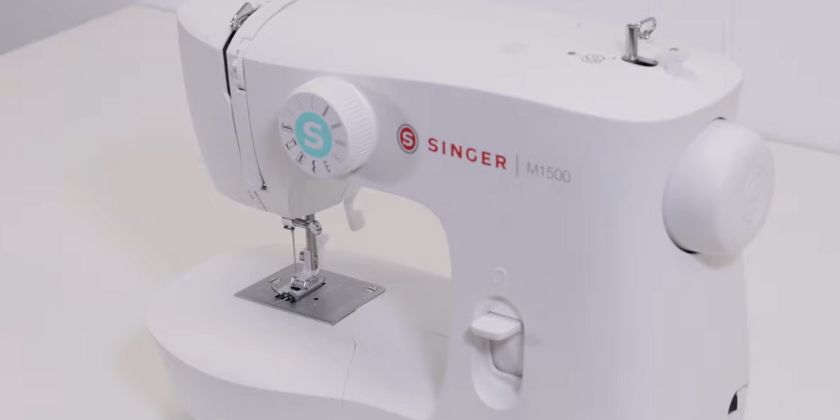
The thread tension dial allows you to fine-tune the look of your stitch depending on the fabric and thread selection. Plus, the powerful StayBright LED lighting will illuminate your sewing area to help eliminate shadows.
Additionally, the Singer M1500 machine includes:
- An all-purpose foot.
- Zipper foot.
- Four-step buttonhole foot.
- Other accessories to tackle any project.
It also includes a pack of needles, a seam ripper/lint brush, a screwdriver, extra bobbins, a spool pin felt, and a darning plate.
Its built-in carrying handle makes travel easy, whether off to a sewing class or crafting. And when it comes to storage, the removable storage compartment makes packing and putting away a breeze.
Pros and Cons
Pros:
- Compact and Lightweight
- Wide range of stitch options
- Easy to learn
- Free arm and twin-needle functionalities
Cons:
- No stitch length/width adjustment
- The four-step buttonhole has a slightly steeper learning curve.
2. Magicfly Mini Sewing Machine – Best Sewing Machine For 9-Year-Old
Budget Pick
- Dual power operation
- Dual-speed functionality
- 12 built-in stitches
- 2.2 lbs weight
If your kid has just developed an interest in sewing and you want to buy them a simple sewing machine (before upgrading to a better option), check out the Magicfly Mini Sewing Machine.
As its name suggests, it’s a ‘mini’ sewing machine with 8.3″ in height and 7.7″ in length and is primarily geared towards beginners/kids.
I’ve seen many new sewists overwhelmed by the sheer amount of stitch options. Thankfully, that’s not the case with this machine, as you get only one stitching type with fixed stitch width and length.
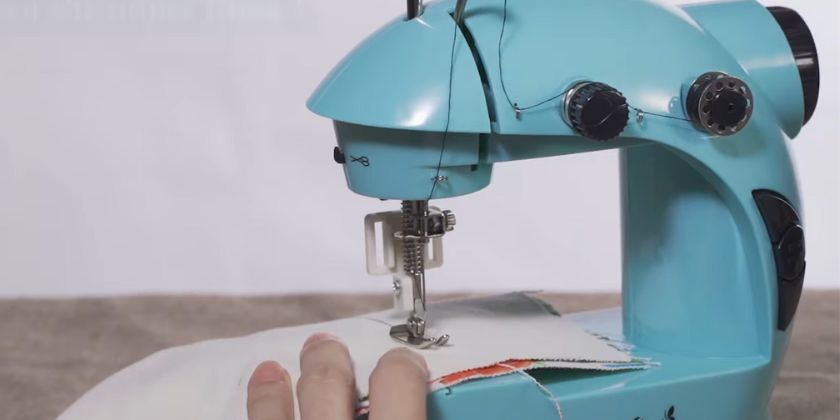
The Magicfly Mini sewing machine offers dual-speed functionality, allowing you to adjust the speed to your desired needs to work at the pace that suits you.
You also get a comprehensive sewing accessory kit with everything you might need as a sewist, such as bobbins, needles, scissors, a threader, tape measure, a seam ripper, a thimble, an extension table, and a storage bag.
Additionally, everything you need to get started quickly comes already threaded and with a small piece of fabric.
Pros and Cons
Pros:
- Beginner-friendly
- It can be powered by AA batteries
- It comes with a lot of accessories
- Fast stitch speeds considering its price
Cons:
- Not good for thick fabrics
- The foot pedal feels a bit fragile
- Only offers a small workspace
3. Brother CS7000X – Best sewing Machine For 12-Year-Old
Upgrade Pick
- 5mm stitch length
- 7mm stitch width
- 750 stitches/minute speed
- 70 built-in stitches
If you want a future-proof sewing machine for your 10-year-old kid that they can use at 12/13, Brother CS7000X is a reasonable option.
It is easy to use and comes with goodies like an LCD display, adjustable sewing speed control, and a free arm to sew cuffs, sleeves, and skinny jeans easily.
You also get an automatic needle threader to ensure threads are correctly positioned and a drop feed mechanism for free-motion sewing and quilting. With 70 utility, decorative, and heirloom stitches, you will indeed find the perfect one for your project.
The included 10 sewing and quilting feet, such as a zigzag, buttonhole, zipper, button sewing, etc., are specially designed for the perfect feel and function.
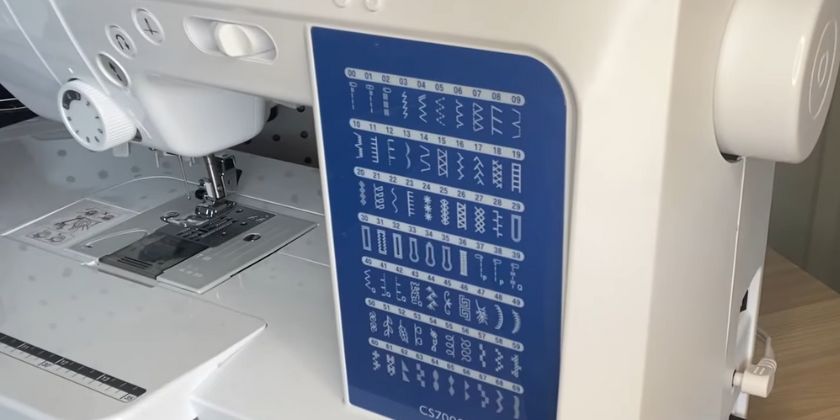
It also comes with a protective hard case, making it an ideal solution for taking your projects on the go.
What makes the Brother CS7000X even more powerful is the wide range of accessories it comes with right out of the box.
This machine also has a jam-resistant Quick-Set drop-in top bobbin and a wide table for larger projects. A detachable wide table gives you a spacious area for larger quilting projects.
You also get a quick-start guide, complete instruction manuals in English and Spanish, and free customer phone and online technical support for the product’s life. Plus, the machine is backed by a 25-year limited warranty.
Pros and Cons
Pros:
- More accessories than other similarly-priced competitors
- Much improved needle threader compared to its predecessors
- Operates quietly
Cons:
- LED lighting could’ve been brighter
- No automatic thread cutter
4. Janome Blue Couture – Best Sewing Machine for 11-Year-Old
- 15 built-in stitches
- 4mm stitch length
- 800 stitches/minute speed
- 5mm stitch width
With a crisp midnight blue design and 15 versatile built-in stitches, the Janome Blue Couture is the perfect machine we have tested for tackling any sewing project with confidence and poise.
This machine boasts a powerful 3-piece feed system, adjustable stitch length and zigzag width, and a convenient front-loading bobbin system for quick and easy access to the bobbin system – without ever having to take your fabric out.
Its heavy-duty metal frame and dual retractable spool pins ensure lasting quality and durability. It even comes with a removable free arm attachment – perfect for sewing small openings like a sleeve or hemming a pair of pants.
With five built-in stitches, a four-step buttonhole, adjustable stitch length, and zigzag width – the possibilities are endless. This machine is perfect for primary and fashion sewing, quilting, heirloom, and home décor projects.
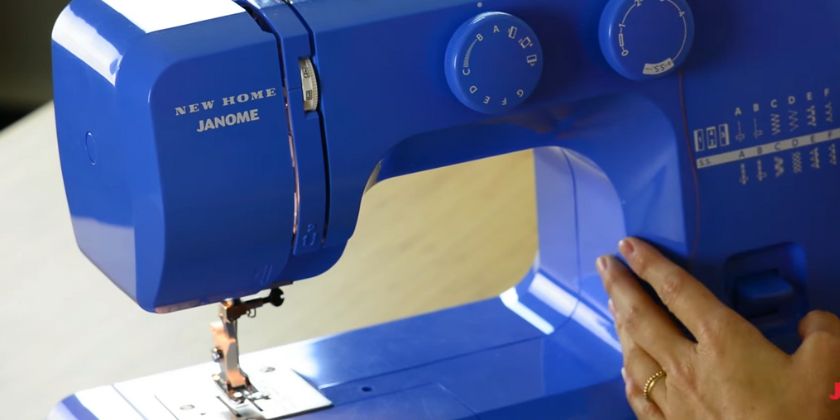
Not to mention, Janome Blue Couture comes with four presser feet – General Purpose Foot, Zipper Foot, Blind Hemming Foot, and Sliding Buttonhole Foot – for extra versatility and precision.
With the free arm, you can comfortably sew small openings, such as sleeves.
You can also select the correct tension for your fabric type with the adjustable tension. The snap-on presser feet, darning plate, and extra-high presser foot lift make for versatile sewing. And, of course, the LED sewing space light will make your projects look even better.
Pros and Cons
Pros:
- Solid build
- Easy to use
- Front-loading bobbin system
Cons:
- Bobbin mechanism is slightly complicated for some users
- The user manual could’ve been more detailed
5. NEX Sewing Machine
- 12 built-in stitches
- Dual power operations
- 280 +/- 40 stitches per minute speeds
- 5.87 lbs weight
The last sewing machine we tested in this roundup is the NEX Sewing Machine
Its 12 stitches provide you with a level of versatility rarely seen in machines of its size. With a built-in measuring tape and tension adjuster, this machine is the most convenient and reliable entry machine into the sewing world.
The NEX Sewing Machine is designed to make your life easier, with two-speed settings, a forward and reverse sewing option, and an integrated thread cutter.
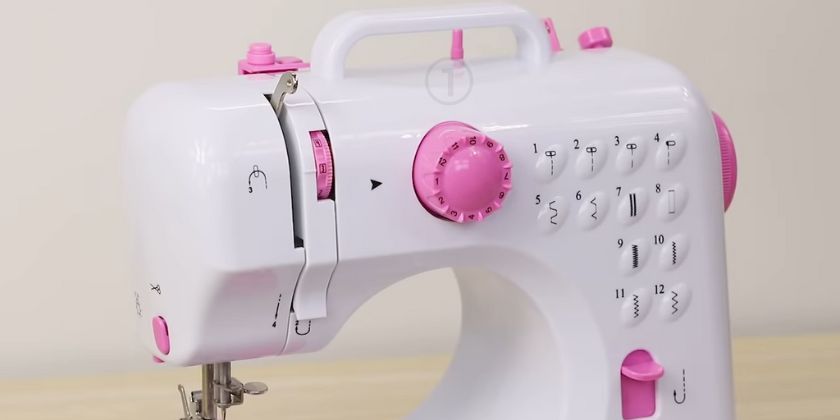
Plus, you can choose between using a hand switch or foot pedal to start the machine, allowing you to set it up to your comfort level.
You’ll be able to sew up to five layers of thin denim with ease, thanks to the max sewing thickness of 2.5mm. This machine can also sew sleeves and replace all-purpose presser foot holders. But that’s not all — it also includes a built-in sewing light, so you can see clearly every stitch you make.
Another thing I liked about the NEX sewing machine is the availability of reverse sewing and thread tension control – despite being an entry-level sewing machine. For those who don’t know, reverse sewing allows this machine to stitch in reverse without changing the direction of the fabric.
On the other hand, the thread tension control allows you to adjust the thread tightness according to the material you’re sewing.
Pros and Cons
Pros:
- Specifically designed for kids
- Lightweight and portable
- It can be operated with batteries
Cons:
- It can’t be used for thick fabrics
- No reverse sewing
How Do I Teach My 10-Year-Old To Sew?
First, providing the tools they need to learn how to sew is essential. You should have them use small scissors specifically designed for children since adult ones can be too large or sharp for their hands. Additionally, provide them with needles of different varieties to practice using different gauges and materials.
Next, you’ll want to select an appropriate pattern for your child– something small with a few pieces that aren’t overly complicated. Simple shapes like triangles and rectangles are good at this stage.
Thirdly, supervise your child while they learn how to sew so you can answer any questions about securely threading needles or knotting fabric together.
Is Sewing a Good Hobby for Kids?
Yes, sewing is a great hobby for kids. It’s an incredibly valuable skill that can be used to create projects such as clothes, blankets, and other functional and decorative items. Not only is it a practical way to express creativity and develop problem-solving skills, but it can also provide an outlet for relaxation.
Sewing requires patience and dedication, so it’s great for teaching children about self-discipline and the importance of detail.
Other than that, sewing encourages hand-eye coordination, builds confidence in young crafters, Stimulates creativity, and enhances their problem-solving ability.
Can Sewing Be Self-Taught?
Sewing can be self-taught relatively quickly with the right resources and dedication. Even a few basic skills can help you create beautiful, handmade items you’ll cherish for years.
For those new to sewing, the best place to start is by familiarizing yourself with the tools and supplies needed for various projects.
Learn what needle, thread, fabric scissors, measuring tape, and pins are used in different sewing tasks. It’s essential to use the right tool when working on your projects. Using something as simple as a thicker needle on thinner fabrics can cause issues like fraying or holes in delicate materials.
Start by practicing stitches on small scraps of fabric until you feel comfortable operating your machine without worrying about making mistakes on the finished pieces.
You can also use YouTube channels, books, blogs, physical meetups, etc. in this regard.
What Can A 6-Year-Old Sew?
For younger kids just starting out with sewing, it’s best to keep projects simple and start with hand sewing rather than using a machine.
Begin by teaching your child how to thread a needle safely and basic stitches such as running and blanket stitches. As they get more confident, introduce them to other techniques, such as gathering fabric or backstitching, which will help them gain mastery in decorative stitching.
Once your child feels comfortable with basic hand-sewing skills, you could move on to introducing them to machine-sewing – however, again, make sure you take time to show them how to operate the machine safely, too.
What Are Basic Sewing Techniques?
Here are some essential techniques you should learn before tackling more complex projects:
- Threading the needle
- Knotting thread ends
- Stitching straight lines
- Backstitching
- Zipper installation
- Hemming
What Are The Easiest Clothes To Sew?
If you’re a beginner in sewing, it’s best to start with essential items like t-shirts, tanks, leggings, pillowcases, and other simple rectangular-shaped pieces of clothing.
These projects can be sewn within an hour or two since they involve straight stitching lines and no complicated shapes or patterns.
How you can Select a Sewing Machine for Kids
Safety Features
When purchasing a sewing machine for kids, it’s crucial to carefully consider the safety features it offers.
Look for machines with an automatic needle threader, eliminating the need for manually threading the needle and reducing the risk of accidental pricks.
Adjustable stitch length and width settings provide flexibility and allow kids to customize their sewing projects while maintaining control.
Additionally, having removable storage compartments for small items like needles or bobbins helps keep them organized – reducing the chances of them getting lost or misplaced.
Lastly, ensure that the machine has a sturdy and reliable protective cover over the needle area to prevent children from accidentally touching it, providing an extra layer of safety during their sewing adventures.
Ease of Use
When selecting a sewing machine for kids, it is essential to consider several factors. Firstly, ensure the machine is easy to use, with user-friendly features designed for young learners. Look for lightweight models that are easy to handle and maneuver.
In addition to this, consider machines that offer an adjustable speed setting. This feature allows children to familiarize themselves with the rhythm of the sewing process while having control over the sewing speed.
Choosing a machine that displays the stitch type, length, and other vital settings on a clear and visible screen is also beneficial. This allows young sewers to easily monitor and adjust their stitching according to their preferences and project requirements.
Aesthetics
Opting for machines with bright colors and fun designs can significantly enhance the sewing experience for kids.
The visually appealing images of animals, cartoon characters, or other captivating visuals can capture their interest and motivate them throughout their sewing projects.
Moreover, machines with accessories like a carrying case or shoulder strap make it easier for kids to transport their sewing machine and add to the overall convenience and functionality.
Stitch Options
When selecting a sewing machine for children, it is crucial to consider the range of stitch options the machine offers. For young beginners, it is recommended to choose a machine that provides basic straight and zigzag stitches.
These stitches are easy to learn and understand, allowing children to develop their sewing skills confidently.
Children can start exploring more intricate stitch designs as they progress and become more proficient in their sewing projects.
This may include buttonhole stitch, overlock stitch, and scallop stitch, among others. These advanced stitch options offer a new level of creativity and versatility, enabling children to experiment with different sewing techniques and further broaden their skills.
Noise Level
When choosing a sewing machine for children, it is important to ensure that the noise level does not exceed a certain threshold.
An overly loud or disruptive machine can be distracting and discourage kids from using the machine altogether. It is, therefore, essential to select machines that are designed with quiet operation in mind to create an environment that is both enjoyable and conducive to learning.
Modern sewing machines for kids usually have noise-reduction features like special threading mechanisms and motor dampeners.
Additionally, it is beneficial to opt for models that feature an automatic needle threader, as this further reduces the amount of manual operation needed and thus lowers the overall machine noise level.
Weight
The weight of a sewing machine significantly affects its portability and ease of use, especially when choosing a machine for a child.
Lightweight models are preferable as they can be easily moved and stored, making them a versatile choice for children’s use.
A sewing machine that is too heavy may discourage children from using it regularly as they may struggle to move it around or put it away after use. Conversely, a machine that is too light may lack stability, which could lead to frustrating sewing experiences.
Budget
Lastly, it is crucial to consider the budget when selecting a sewing machine for your child. While many modern kids’ machines are affordable, some more expensive models offer additional features and capabilities.
When considering cost, however, it’s essential to remember that cheaper machines may not always be better value for money in the long run. Generally speaking, it is better to invest in a higher quality machine as it will be more reliable and last longer.
